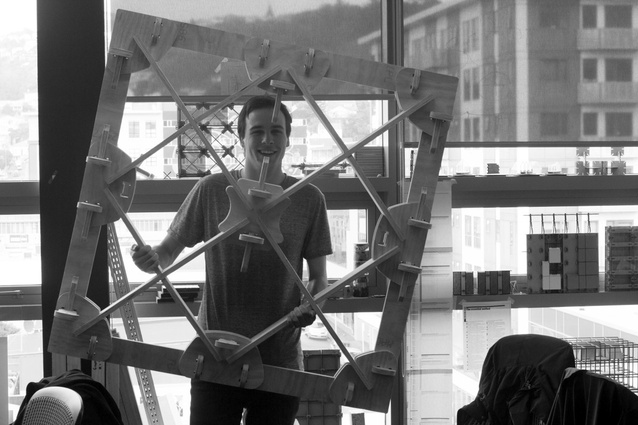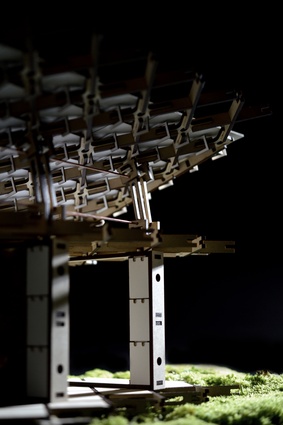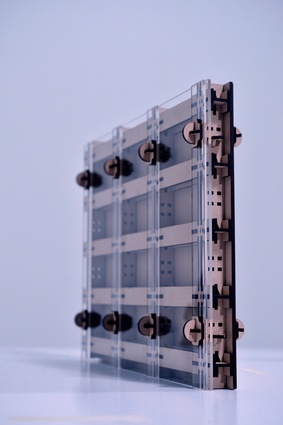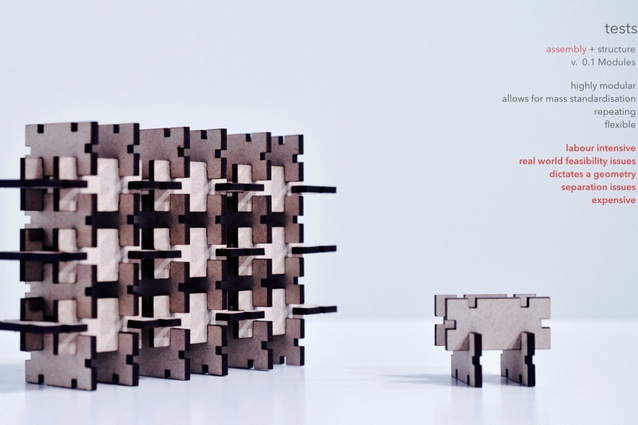Show Us Your Thesis: Ged Finch
ArchitectureNow and the Student Architecture Network New Zealand (SANNZ) have once again teamed up to present an interview series on the work and thoughts of final year Master of Architecture students at New Zealand's three schools of architecture: Victoria University of Wellington, The University of Auckland and Unitec Institute of Technology.
Up first is Ged Finch from Victoria University, whose thesis looks at innovative ways the architecture industry can scale back the amount of waste it produces before, during and after the construction process. Ged's project won a Highly Commended award in the 2017 NZIA Central Innovation Student Design Awards.
Student Architecture Network New Zealand (SANNZ): In 20 words, what is your thesis about?
Ged Finch: I’m looking at what it means to ‘architect’ in a circular materials economy – i.e. a world where we don’t throw anything out.
SANNZ: Who is your supervisor and why did you choose to work with him/her?
GF: Guy Marriage. He is just utterly fabulous. His ‘prac-ademic’ background means that all of the design experimentation is evaluated both from a “struth, that looks cool!” and a “yeah but how water tight is it?” point of view (Marriage, 2016). He has a ‘hands-off’ / you-do-you approach to supervision, he lets us make mistakes and will reel us in if we go too far off course.

We have fantastic conversations about his Grand Designs fame as well as the endless list of pioneering student projects he has been a part of (First Light, Warrender Studio etc). Best of all you can feel that he is genuinely interested in the work and what it could mean for the industry – which is real motivation to work harder and produce better results.
SANNZ: When you started your Masters just over a year ago at the start of fourth year, did you think your thesis would take this direction?
GF: Absolutely not. I was (and perhaps still am) madly in love with Peter Wood. I really just wanted to make weird abstract dystopian physical models for the rest of my architecture school life and thought that Peter’s interpretation of the physical model process was just superb.
Ironically what made me change my mind was building models in 4th year and realising just how much waste that we, as architecture students, produce. This tickled the ‘greenie’ in me and I haven’t really looked back.
SANNZ: What are your plans for next year?
GF: Up until the start of this year I had my hopes set on Weta Workshop as a set designer. However my research has highlighted just how much work there is for us to do as an industry with regards to reducing waste. Its pretty hard to stomach that 50 per cent of all the world’s waste comes from buildings. This has really motivated me to go looking for a role where I can use my new knowledge to begin to influence how we build.
Kieran Timberlake Architects in Philadelphia are the world leaders in this sort of work so that would be a dream, but there are also firms much closer to home (such as Studio Pacific) who are actively looking at material life cycles.
SANNZ: Do you feel that architecture school has prepared you for the realities of working in the industry?
GF: In many ways, yes! I spent 2 months in Malaysia over summer working as an intern in two medium-sized firms. Even with the massive culture shock and language barriers I felt like everything had a sense of familiarity to it. I spent 4 weeks detailing a car park and although the whole process was fairly mind-numbing, the research and documentation skills all came straight from 2nd and 3rd year construction papers. Everything from the coffee culture to the total disregard for sleep seemed right on par with architecture school.
SANNZ: Do you work while studying/how many hours? How do you find the balance?
GF: I’m an all or nothing kind of person so will spend at least 50 hours a week ‘thesising’. This probably isn’t very healthy but it does mean the work keeps moving forward. I also tutor between 6 and 8 hours a week and thoroughly enjoy it. After spending hours alone lost in research where it feels like you know absolutely nothing, tutoring made me realise just how much ‘learning’ had happened over the past 4 years. I’m also all about having a fixed routine through the week and find that tutoring really helps to cement this.

SANNZ: What music or artist has helped you get through architecture school?
GF: I am a huge audio-book fan. Generally I listen to philosophy-based science fiction. It sounds boring (and it probably is) but it can be fascinating and really inspiring for design-based problems. Lots of the work tends to deal with place and identity – both fundamental architectural ideas. A personal favourite is Xenocide (written by Orson Scott Card).
SANNZ: Where are you from? What’s your opinion of the architecture or built environment there?
GF: Home is the deep south – a small town called Alexandra in Central Otago. Alexandra is about an hour’s drive from Queenstown and shares a very similar landscape. It is a breathtakingly beautiful place but has a rapidly growing population that is unfortunately causing irreversible damage to the environment. In many ways the ‘built environment’ in this place is literally a scar on the landscape and not something to be proud of. As a result, I believe that one of architects’ key responsibilities is mediating the impact of humans and population growth on the natural environment.
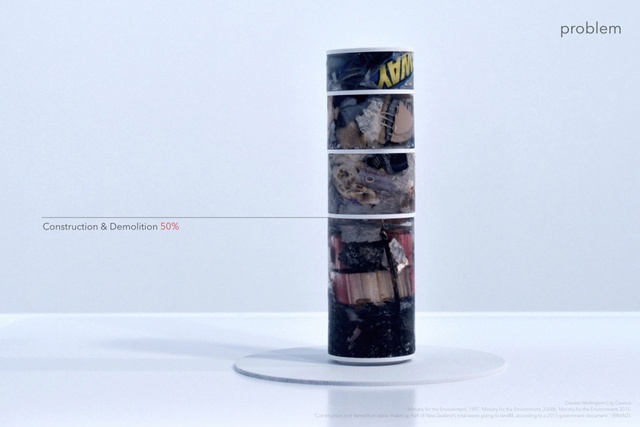
SANNZ: How do you ‘switch’ your brain off after a long day at uni?
GF: OK, this is pretty weird, but I usually fall asleep listening to talk-back radio. My friends have told me this is something only old people do… but honestly if you really want to know what the other half thinks listen to late night talk radio – things get a bit freaky after 1am.
SANNZ: What inspires you?
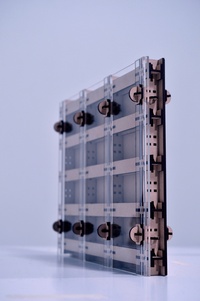
GF: As an undergraduate I never worked in studio – I was lucky enough to be an RA in a Hall of Residence with heaps of space to work and free heating. However, I regret that and over the past two years have spent a lot more time working at University and absolutely love it. My classmates are full of endless inspiration – a 10 minute chat with someone at the laser cutter can result in 2 weeks of investigation that you had never even considered.
My ‘stream-mates’ (Mitch, Nick and Lisa) have had a huge influence on the direction of my work, they happily let me know when I’ve done something stupid, and constantly inspire me to keep refining the outputs. I feel extremely lucky to be surrounded by such a talented group of future architects/designers/humans!
The Show Us Your Thesis series is thanks to the Student Architecture Network New Zealand and to the students involved. Read more interviews here.

